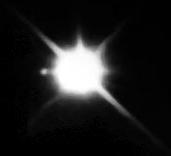Synthetic Colors and Evolutionary Sequences of Hydrogen- and Helium-Atmosphere White Dwarfs
Pierre Bergeron, Gilles Fontaine, Patrick Dufour, Antoine BédardDépartement de physique
Université de Montréal
bergeron, fontaine, dufourpa, bedard@astro.umontreal.ca
Simon Blouin
Los Alamos National Laboratory
sblouin@lanl.gov
Pier-Emmanuel Tremblay
University of Warwick
P-E.Tremblay@warwick.ac.uk
Piotr M. Kowalski
Forschungszentrum Juelich GmbH
p.kowalski@fz-juelich.de

Synthetic Colors
Tables are provided with bolometric and absolute magnitudes on various photometric systems for an extensive grid of pure-hydrogen and pure-helium white dwarf model atmospheres. These include, in this particular order, the Johnson-Kron-Cousins UBVRI, Two Micron All Sky Survey (2MASS) JHKs, Mauna Kea Observatory (MKO) YJHK, Wide-field Infrared Survey Explorer (WISE) W1 to W4, Spitzer Space Telescope Infrared Array Camera (IRAC) 3.6, 4.5, 5.8, and 8.0 microns, Sloan Digital Sky Survey (SDSS) ugriz, Panoramic Survey Telescope and Rapid Response System (Pan-STARRS) grizy, Gaia G, GBP, and GRP, and Galaxy Evolution Explorer (Galex) FUV and NUV colors. These calculations can easily be extended to any given photometric system upon request.
Stellar masses and cooling ages are also obtained for each model from detailed evolutionary cooling sequences appropriate for these stars. We use our latest generation of evolutionary sequences published in Bédard et al. (2020, ApJ, 901, 93) and provided below. We rely on stellar models with thick (qH≡MH/M*=10–4) and thin (qH=10–10) hydrogen layers for the pure-hydrogen and pure-helium model atmospheres, respectively.
Details of the color calculations are given in Holberg & Bergeron (2006, AJ, 132, 1221, "Calibration of Synthetic Photometry Using DA White Dwarfs"), which represent an extension of the earlier work by Bergeron, Wesemael, & Beauchamp (1995, PASP, 107, 1047, "Photometric Calibration of Hydrogen- and Helium-Rich White Dwarf Models"). For each set of filters, the files Table_DA and Table_DB correspond to pure-hydrogen and pure-helium model atmospheres, respectively. The DA grid covers a range from Teff = 2500 K to 150,000 K and from log g = 7.0 to 9.0, while the DB grid covers a range from Teff = 3250 K to 150,000 K and from log g = 7.0 to 9.0. At low temperatures (Teff < 5000 K and 8000 K for the DA and DB grids, respectively), we use the models of Blouin et al. (2018, ApJ, 863, 184), which include non-ideal effects. At high temperatures (Teff > 30,000 K and 40,000 K for the DA and DB grids, respectively), we rely on the models of Bédard et al. (2020, ApJ, 901, 93), which include non-LTE effects. At intermediate temperatures, we use the DA models of Tremblay, Bergeron, & Gianninas (2011, ApJ, 730, 128) and the DB models of Bergeron et al. (2011, ApJ, 737, 28). The DA grid incorporates the Lyman alpha profile calculations of Kowalski & Saumon (2006, ApJ, 651, L137). Tables are also provided at given masses for both DA and DB models through the files Table_Mass_*.
Acknowledgement: If you are using any of these color tables, please acknowledge this Web site (http://www.astro.umontreal.ca/~bergeron/CoolingModels) and include the relevant references mentioned above.
Last update: August 18th, 2020.
| AllTables.tar.gz |
| Table_DA |
| Table_DB |
| Table_Mass_0.2 |
| Table_Mass_0.3 |
| Table_Mass_0.4 |
| Table_Mass_0.5 |
| Table_Mass_0.6 |
| Table_Mass_0.7 |
| Table_Mass_0.8 |
| Table_Mass_0.9 |
| Table_Mass_1.0 |
| Table_Mass_1.1 |
| Table_Mass_1.2 |
| Table_Mass_1.3 |
[top]
Evolutionary Sequences
The theoretical evolutionary sequences of Bédard et
al. (2020, ApJ, 901, 93) are provided
below. These calculations rely on white dwarf models characterized by
a homogeneous and equimassic carbon/oxygen core, a helium mantle, and
an outermost hydrogen layer. Two standard envelope compositions are
considered, corresponding to a thick
(qHe=10–2,
qH=10–4) and a thin
(qHe=10–2,
qH=10–10) hydrogen layer. In each case,
23 cooling sequences covering a range from M* = 0.2
M to 1.3
M
to 1.3
M are
available. See Bédard et al. (2020) for details, including a
discussion of the differences with respect to our previous generation
of evolutionary sequences introduced by Fontaine, Brassard, & Bergeron
(2001, PASP, 113, 409).
are
available. See Bédard et al. (2020) for details, including a
discussion of the differences with respect to our previous generation
of evolutionary sequences introduced by Fontaine, Brassard, & Bergeron
(2001, PASP, 113, 409).
The name of a given file specifies the stellar mass and the
thickness of the hydrogen layer: for instance, seq_060_thick refers to
M* = 0.6 M and qH=10–4. For each
stellar model, we give, in this particular order, the effective
temperature, surface gravity, radius, cooling age, photon luminosity,
central temperature, central pressure, central density, fraction of
crystallized mass, location of the crystallization front, neutrino
luminosity, and total mass fractions of hydrogen, helium, carbon, and
oxygen. We use cgs units throughout, and the header indicates which
quantities are expressed as logarithms.
and qH=10–4. For each
stellar model, we give, in this particular order, the effective
temperature, surface gravity, radius, cooling age, photon luminosity,
central temperature, central pressure, central density, fraction of
crystallized mass, location of the crystallization front, neutrino
luminosity, and total mass fractions of hydrogen, helium, carbon, and
oxygen. We use cgs units throughout, and the header indicates which
quantities are expressed as logarithms.
| AllSequences.tar.gz |
[top]